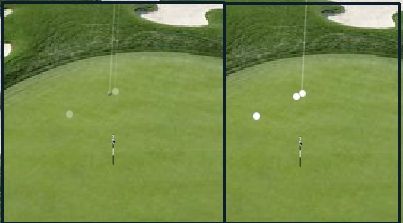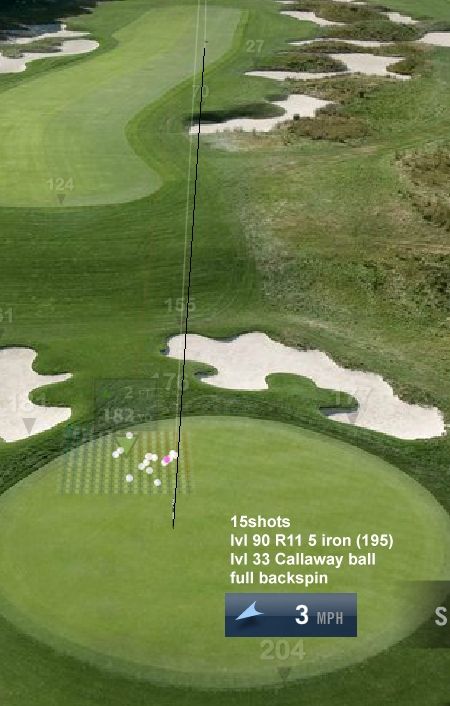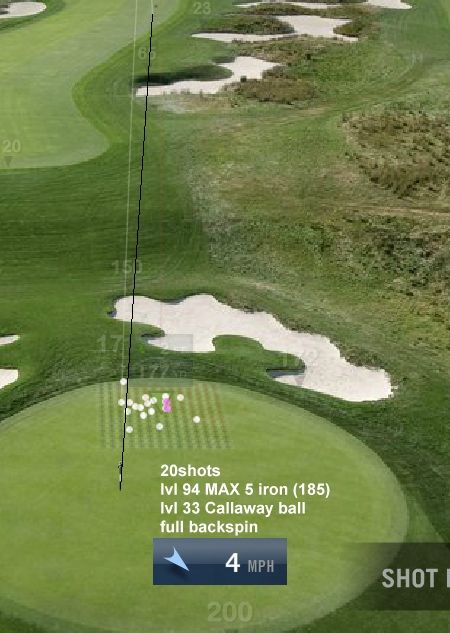I wasn't at all happy with the speed of the process, and I was underwhelmed by the final visual, as well, so I changed my method.

Instead of blending all of the images together (which looks great on the putter tests but not so much here) I decided to replace the balls with white dots. I still used layers in order to perfectly synch the photos. The image above shows how I added the third shot (the middle ball, the first two dots are faded in the ;left image because the transparency of the top layer is turned down) and replaced it with a dot before discarding the new layer.
I also found out that it's unusual to get the back pin on this hole, even with the "hard" setting, and getting the back pin with a specific wind direction requires a lot of luck...so I'll use the front pin from now on.


I think that's quite a bit more legible. Pink dots count as two; that's where two balls landed in almost exactly the same spot. The black line gives an idea of how far the shots moved off-line.
I wanted to do 20 shots with the R11, but grew frustrated at my inability to hit the ding and cut the trial short. The L94 Max Meter Irons were nice and dingable, and I think they held their own in the precision department. Both sets varied by about 22 feet front-to-back. The R's were 13-14 feet side-to-sice, the MAXes 16-17.
The MAXes should be grouped a little tighter because they only carried about 177 yards vs. around 183 for the R11 group. Then again, it probably makes less than a foot of difference, and that might be totally mitigated by the extra 1 mph of wind speed if stronger winds lead to more variance, which I suspect. I did start with the 200 yard MAX 4 Iron, but was forced to start over after mapping six shots when I lost my mulligans, wind, and launching point. Lesson learned: don't hit near the hole.